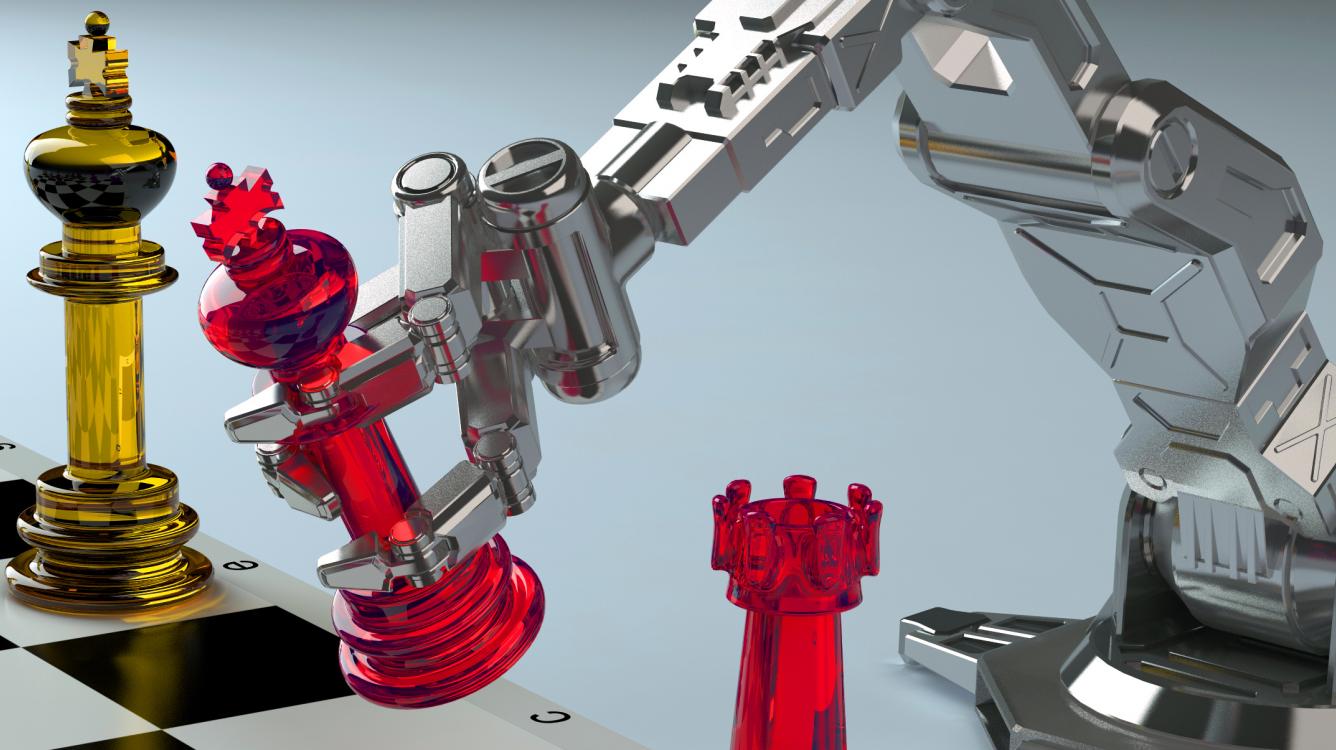
How To Use A Chess Computer
Whether you are a Luddite or technophile, the importance of being able to successfully collaborate with a chess computer cannot be overstated.
In every stage and aspect of the game — opening preparation, endgame theory, game analysis — the computer is an invaluable tool, a tireless servant that one can harness to unlock the secrets of virtually any position.
For all of their omnipotence, though, computers possess one major flaw: they cannot speak.
If Stockfish or Houdini could verbally explain their suggestions, then humans could essentially put their brains aside while analyzing. But because the only language computers understand is that of chess notation, we must supplement their learned input with our own explanations, rationalizations, and understanding.
It is only through active collaboration — constantly questioning and understanding the computer's choice, offering and testing moves that the computer does not suggest, and analyzing the game or position on your own before enlisting the help of the machine — that you will be able to extract true benefit from the silicon monster.
To this end, being faced with a computer suggestion that you simply cannot understand (a scenario that bedevils beginners and grandmasters alike all too often) can be infuriating beyond words. Drawing on my own experience, here are three methods for you to comprehend even the most outwardly inscrutable of computer suggestions.

Hopefully, these tips will help you maximize the efficacy of your collaboration with the computer. And I can assure you that a fruitful collaboration is the first step toward improved self-diagnosis, a more dynamic opening repertoire, and superior overall chess understanding!
Method #1: Ask questions.
In many cases, the computer's suggestion runs counter to our intuitive notion of what a correct move looks like. Indeed, I have often caught myself scoffing at Stockfish's recommendation; this move is too anti-positional/[insert alternative criticism] to work! In spite of its appearance, though, you will often find that the move finds support in the concrete circumstances of the position. As we have discussed many times before, concrete circumstances always transcend general principles.
When the computer suggests a move that violates every precept known to man, do not be afraid to give it a run for its money. Try to refute its suggestion; explore as many variations as possible. Though such interrogation may seem like a thankless effort, it will enable you to understand the mechanism behind the computer's mysterious suggestion, and arrive at a fuller understanding of the position.
Method #2: Take a broader stance.
Humans like logic. When we are attacking on the kingside, we look for moves that strengthen the assault. When we are trying to exploit a weak square, we search for ways to permanently entrench a piece on that square. Usually, this kind of targeted thinking saves us a wagonload of time, and leads us to the correct move. In certain cases, though, this narrowing-down may lead us to automatically eliminate moves that do not seem to fall into our general plan. The computer possesses no such common sense, so its suggestion may appear incomprehensible because it does not seem to be in the spirit of the position (Russian speakers: этот ход невпопад!).
When you find yourself in such a situation, try to broaden your conception of the position. While a move might seem out of place, the logic behind it might very well be somewhat convoluted. Sometimes, it is a good idea to lay the computer aside, take a deep breath, and puzzle out the move's intention simply by reasoning logically for five or 10 minutes.
Method #3: Understand computers are not infallible.
You know this already, but let me remind you of a crucial fact: computers are nearly infallible, but there is still the occasional position in which the silicon machine falters. Usually, computer errors fall in one of two categories:
1) The computer has not been given enough time to think. This usually happens in complex tactical positions, when even the computer needs a few moments to puzzle out the complications.
2) There still exist certain positions that the computer does not fully "understand."
The first issue is easily resolvable. When you are analyzing a game, do not rush to trust the computer's suggestions. Even in relatively simple positions, give it some time to think. The second problem, however, is more thorny. While modern computers are far better at recognizing fortresses and theoretical endgames than early machines (especially with the advent of comprehensive endgame tablebases), they are by no means flawless.
For instance, in certain positions, the computer may greatly overestimate the worth of a material advantage, or fail to perceive a complex fortress.
The moral is straightforward: to be a cyborg, you must have a human part as well! As computers have gotten stronger and stronger, the temptation to blindly follow its suggestions, letting it do 100 percent of the work, has grown exponentially.
But the first and most important rule of working with the machine is to be present and active at all times.
This article is by no means a comprehensive guide to working with the computer, but I hope that the tips I have provided will help you make the most out of the technological revolution that is taking the chess world by storm. It is a terrible tragedy that many individuals have abused their power by shamelessly cheating at tournaments, but there is still a legal and ethical way to become a cyborg!

